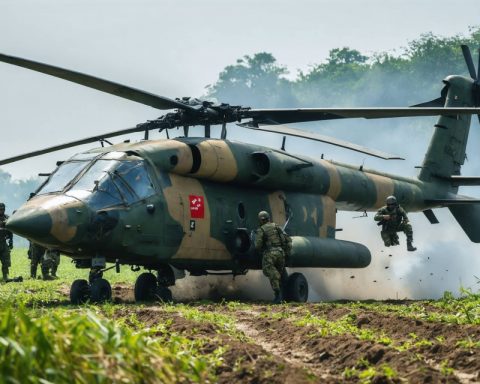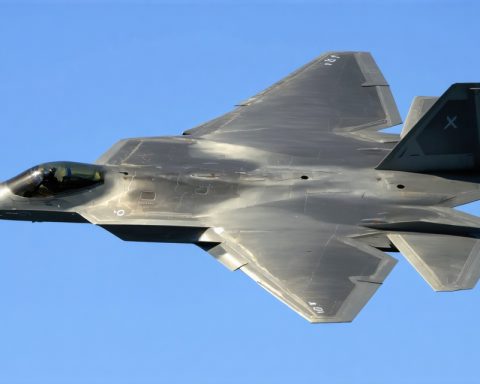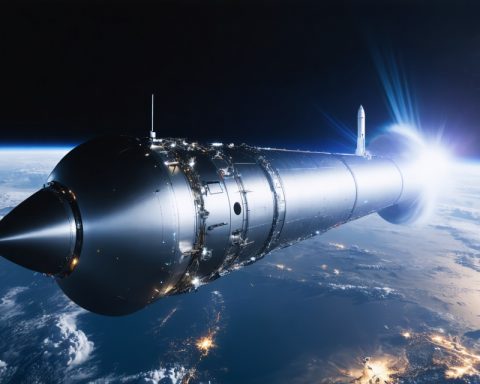- Saudi Arabia is striving to join the Global Combat Air Programme (GCAP) alongside the U.K., Italy, and Japan, aiming to develop a sixth-generation fighter jet.
- Plans include establishing assembly lines for NH90 helicopters and Eurofighters to enhance the kingdom’s aerospace capabilities.
- Collaboration with European defense entities is seen as crucial for skill-building and industrial partnership development.
- Agreements with Leonardo point towards strengthening Saudi Arabia’s technical expertise and support economic diversification.
- Vision 2030 drives the initiative, focusing on reducing oil dependency and prioritizing high-tech sectors like defense.
- The ambition is to evolve from a consumer to a significant contributor in global aerospace, fostering innovation and strategic collaboration.
Beneath the sun-drenched skies of Saudi Arabia, plans for a transformative leap into the aerospace sector are brewing. The kingdom is eyeing a prime spot in the prestigious Global Combat Air Programme (GCAP), a pioneering jet initiative driven by the U.K., Italy, and Japan. But the road to this sixth-generation fighter jet dream necessitates more than just ambition; it demands meticulous skill-building and industrial strategic partnerships.
Saudi Arabia’s vision aligns with setting up sophisticated assembly lines for NH90 helicopters and Eurofighters. This isn’t merely about financial investment. By grappling with these complex machines, Riyadh can effectively hone its aerospace craftsmanship—preparing its industry to contribute meaningfully to GCAP.
The idea stems from a nuanced understanding shared by European defense players. They see this as not just constructing aircraft, but assembling a robust foundation for collaboration. It’s about forging a symbiotic relationship where expertise transcends borders and industries.
With agreements already penned with aerospace giant Leonardo, Saudi Arabia is on course to enhance its technical prowess. The kingdom’s ambitions match its strides towards economic diversification, as championed by Vision 2030. This initiative seeks less dependency on oil and nurtures high-tech sectors, with defense emerging as a flagship candidate.
For Riyadh, the stakes are electrifying—not only could it host assembly lines, but could also integrate into an evolving Eurofighter that is being redefined for future combat. This evolution marks Saudi Arabia’s momentous ascent, transcending from a mere consumer to a vital contributor in global aerospace circles. Through partnerships, innovation, and strategic foresight, Saudi Arabia stretches towards the horizon, embracing a future where it shapes the skies, not just flies through them.
Saudi Arabia’s Ambitious Aerospace Leap: Will It Conquer the Skies?
Market Forecasts and Economic Impact
Saudi Arabia’s involvement in the Global Combat Air Programme (GCAP) has significant implications for the global defense market. By joining this program, the country is positioning itself as a key player in the aerospace industry, potentially influencing market dynamics, international partnerships, and technology transfer. The investment in aerospace is part of a broader strategy to diversify Saudi Arabia’s economy beyond oil, aligning with its Vision 2030 initiative.
The development of local assembly lines for NH90 helicopters and Eurofighters indicates a burgeoning aerospace sector within the kingdom. As Saudi Arabia moves towards producing sophisticated aircraft, the economic ripple effect could lead to the creation of thousands of jobs, an increase in technical skill levels among the workforce, and a boost in local industries supplying parts and components.
Innovations and Technological Advancements
Integrating into a program aimed at developing a sixth-generation fighter jet places Saudi Arabia at the forefront of aerospace technology. The anticipated advancements include stealth capabilities, artificial intelligence integration, enhanced sensors, and improved flight systems. These innovations not only elevate the military capabilities of the participating countries but also promise advancements in civilian aviation technologies.
The collaboration with aerospace giant Leonardo underscores a transfer of expertise and technology, facilitating Saudi Arabia’s transition from a consumer to a producer in the aerospace sector. Mastery over complex systems like the Eurofighter will enhance Saudi Arabia’s capacity to innovate and contribute to forward-looking projects within the GCAP.
Challenges and Limitations
Despite its ambitious goals, Saudi Arabia faces several challenges in this sector. Building the requisite technical expertise might take years of training and development. Establishing a robust infrastructure for aerospace manufacturing, ensuring quality standards, managing supply chains, and achieving regulatory compliance are substantial hurdles that lie ahead.
Moreover, geopolitical considerations could either bolster or impede progress, with international relations playing a crucial role in the transfer of technology and knowledge.
Security Aspects
Participating in GCAP means heightened emphasis on cybersecurity and data protection. As defense systems become increasingly digitized, securing sensitive information becomes paramount. Saudi Arabia will need to invest in robust cybersecurity measures to protect its assets and technological advancements from emerging threats.
Sustainability and Environmental Considerations
The aerospace industry is under pressure to reduce its environmental impact. While developing new fighter jets, Saudi Arabia can explore eco-friendly manufacturing processes and the potential for sustainable aviation fuels. Emphasizing sustainability alongside innovation could place Saudi Arabia as a leader in the green transformation of military aviation.
Pros and Cons of Saudi Arabia’s Aerospace Ambitions
Pros:
– Economic diversification and job creation.
– Enhanced technological capabilities and self-reliance.
– Establishment of international strategic partnerships.
Cons:
– High costs and complex infrastructure requirements.
– Potential geopolitical risks affecting collaborations.
– Long timeline to develop sufficient local expertise.
Conclusion
Saudi Arabia’s foray into the aerospace industry signifies a bold step towards economic modernization and geopolitical influence. While the kingdom faces significant challenges, the potential rewards—ranging from economic growth to technological leadership—are substantial. By committing to this path, Saudi Arabia positions itself not just to participate in global aerospace initiatives but to potentially lead and innovate in them.
For more details on Saudi Arabia’s economic initiatives and Vision 2030, visit the official site of Vision 2030.







